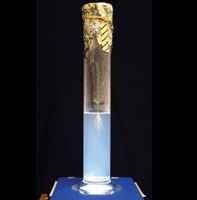Subproject 4 – Soil-plant interactions
Plant-soil interactions in changing rice cropping systems: A - Nutrient balances and yield gap analysis B - Influence on C and N dynamics

The yield gaps (differences between the potential or achievable, and farmers’ actual yields) are relatively large in most rice-growing environments of the Philippines. We hypothesize (SP4A) that these yield gaps can be partially closed through improvements associated with residue return and the integration of upland crops and leguminous cover crops in the niche following wet season rice. The extent of such effects depends on prevailing edaphic conditions and farming systems’ attributes. In four major rice-growing environments of Luzon (incl. the core experiment at IRRI), we shall compare the agronomic performance and quantify partial yield gaps in different cropping and management systems (rice double crop vs. rice – upland crops, with / without straw mulch, with / without “nitrate catch crops”). Actual farmer’s and simulated (ORYZA2000) potential yields, as well as nutrient balances and agronomic attributes of both rice and the dry season crops will be determined in farmer’s-managed field plots and in researcher-managed subplots (dry season crop and residue management) at each site. Yield data will be subjected to frontier and to partial yield gap analyses. Seasonal soil N dynamics during the dry-to-wet and the wet-to-dry transition seasons will be determined under different management scenarios, and partial nutrient balances will be established.
Further objectives (SP4B) are twofold: First, we need to assess the role of desiccation cracks for water, C, and N losses from the plant-soil system, and second we would like to test the effect of measures to reduce crack formation and to improve the biological C and N cycling efficiency. We postulate that i) desiccation cracks are important pathways for C and N entering paddy soils, ii) the soil along cracks is a hot spot of C- and N- cycling due to elevated inputs of C and nutrients and an improved aeration, and iii) mulching with rice straw and cover cropping can reduce C and N losses following the cropping of maize. For testing these hypotheses, we will combine isotope experiments with 13C-labeled rice straw and 15N-labeled urea fertilizer with a selective sampling of soil along cracks and a detailed assessment of crack dynamics. In addition to experiments and techniques established in phase I of this research unit, an endoscope, a dye tracer and a thermo imaging camera will be employed in the planned experiments.
Investigator (SP4A):
Prof. Dr. Mathias Becker
Institution:
Department of Plant Nutrition,
Institute of Crop Science and Resource Conservation,
University of Bonn,
Karlrobert-Kreiten-Str. 13,
53115 Bonn, Germany
Investigators (SP4B):
Prof. Dr. Jan Siemens
Institutions:
Research Centre for BioSystems, Land Use and Nutrition (J. Siemens)
Justus Liebig University Giessen
Heinrich-Buff-Ring 26-32
D-35392 Giessen
INRES Soil Science
Bonn University
Nussallee 13
D-53115 Bonn
